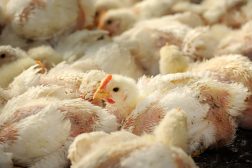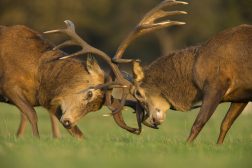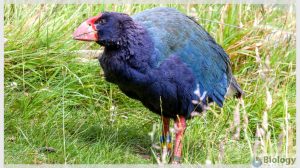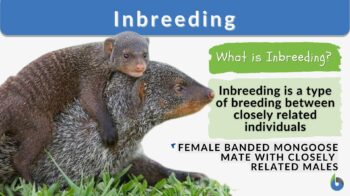
Inbreeding
n., [ˈɪnˌbriːdɪŋ]
Definition: breeding (or mating) of closely related individuals
Table of Contents
Inbreeding is a type of breeding or mating where closely related individuals with a common ancestor produce progenies with traits of higher predictability. Medically, inbreeding in a consanguineous relationship is not advisable due to the expression of deleterious genes.
Genetic inbreeding is a highly debatable topic when it comes to cultural groups. And, it has been explored extensively by scientific groups that have brought more points for debate to the table. While all living organisms are brought to this world to complete the circle of life, at least that is what nature runs the mile for. The question of choosing a mate can sometimes be tricky for some. And then pops the question of “INBREEDING”!
In this brief article, we will discuss what is inbreeding, why some cultures strictly prohibit sexual relationships between relatives, what inbreeding leads to, zebra finch inbreeding and what is an inbred person. As you read more, you will learn how to define inbreeding, modern inbreeding deformities, genes variety, types of inbreeding, average inbreeding, preferential breeding, genetic analysis and genetic consequences of inbreeding, inbred strains, levels of inbreeding, etc.
Inbreeding Definition
Inbreeding is a phenomenon that involves the production of offspring via mating between closely related individuals (close inbreeding). This close relationship between the parents is due to a common ancestry (common line of descent).
Inbred meaning: Progeny created after inbreeding is called “inbred”.
Biology definition:
Inbreeding is a mode of breeding between individuals or organisms that are closely related. A consanguineous relationship has some serious disadvantages. For instance, it increases the tendency of producing offspring with genetic anomalies and congenital birth defects. Inbreeding increases the chances of acquiring deleterious traits. And over time, there would be more individuals with recessive alleles or alleles in homozygous conditions. An example is the preference of the common fruit fly females to mate with their brothers over those who are not their brothers.
See also:
Watch this vid that tells why inbreeding could be bad:
Genetic Disorders
To understand why inbreeding can lead to an increased risk/ greater risk of autosomal recessive disorder (involving expression of recessive genes), we need to focus on what are autosomal recessive disorders.
Autosomal recessive disorders occur when two copies of a mutated gene/abnormal gene/ harmful genes (i.e. 2 mutant alleles/ harmful alleles) come together in a progeny as a result of mating between two carrier or diseased parents. Since the disease is recessive, its expression is manifested in a homozygous state (yy) and not in a heterozygous state (Yy), where Y is the normal allele and y is the mutant/abnormal allele.
Many genetic disorders have an autosomal recessive pattern of inheritance. So, the chances of manifestation of such a disease escalate when both parents are carriers or diseased, which is a common scenario when parents are closely related in the family lines. Many times, the parents are unaware of the fact that they are the carriers of a mutant allele.
Question! Are there any exceptions to this? Can autosomal recessive disorders occur when one of the parents is neither a carrier nor a diseased individual?
THE ANSWER TO THIS IS YES! IT’S POSSIBLE….BUT HOW??
It can happen in 2 cases:
1. First case: Novel mutation
The progeny might get an autosomal recessive disease when one of the alleles coming from a healthy parent acquires a spontaneous genetic mutation.
2. Second case: Uniparental disomy
Uniparental disomy is described as a situation where a progeny receives both alleles for a particular gene from the same parent. In such a case, if the parent contributing to the alleles is a diseased one, the progeny is bound to acquire the autosomal recessive disorder/disease.
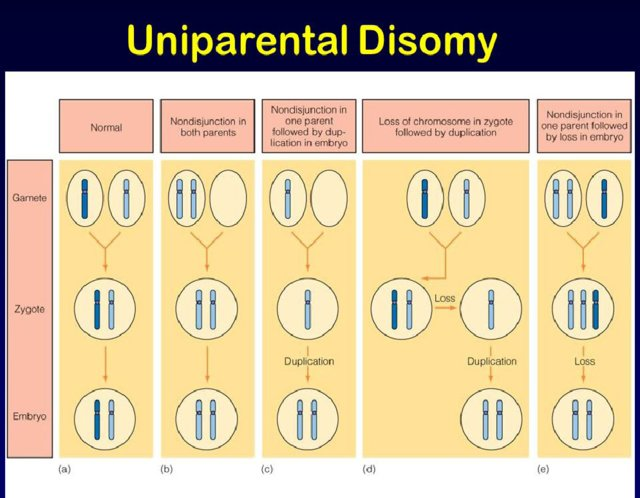
Now that we have a clearer idea about autosomal recessive diseases, let’s see how inbreeding has led to a range of genetic disorders in the general population of humans. It also depends on how closely or distantly the parents are related to each other. If the parents are very close relatives, the relative risk of acquiring the autosomal recessive disorder increases. On the other hand, if the parents are distant relatives, the associated risks are lower.
Examples
Some inbreeding examples across different facets of life forms are:
- Common fruit flies: Scientifically called Drosophila melanogaster display typical inbreeding where the female flies prefer brothers over unknown counterparts for mating.

- Banded mongoose: Scientifically called Mungos mungo is an exception to mammals that have not developed an incest avoidance strategy like other mammals. Female banded mongoose regularly mate with their closely related males (father and brother) and carry incest mutations.

- Alfalfa plant: Scientifically called Medicago sativa is a leguminous plant that displays high levels of self-pollination, thus leading to inbreeding depression. Inbreeding depression is the phenomenon in plants that accompanies reduced fertility and vigor in the family line, thus leading to the collapse of the family line after 3 or 4 subsequent generations.
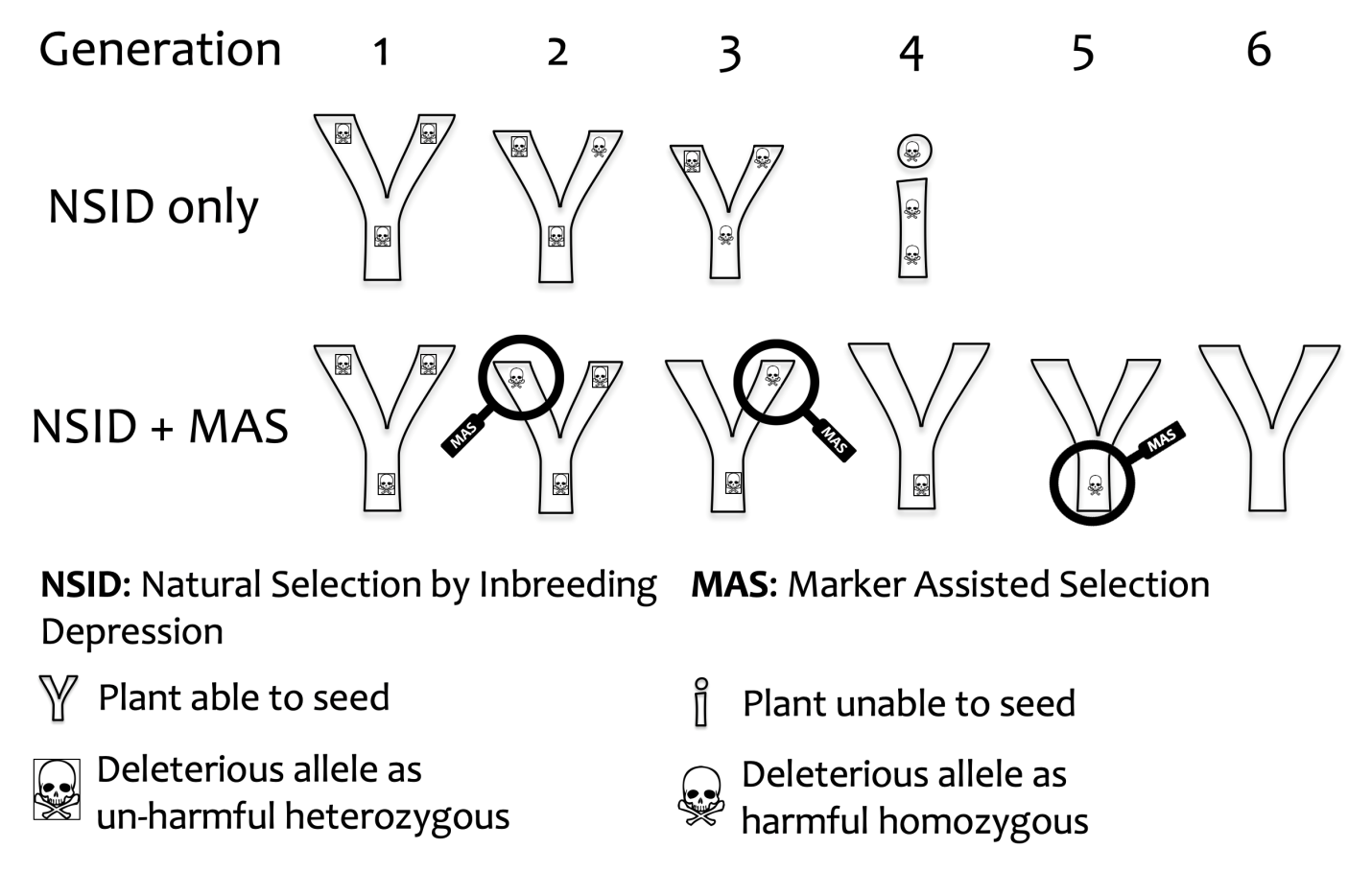
- Decorated crickets: Scientifically called Gryllodes sigillatus are the common house crickets found in abundance in urban areas or tropical areas. They display inbreeding where an exceptional phenomenon of increased immunity is observed. Usually, the inbreeding concept goes hand in hand with some or the other deleterious effects. But a statistically significant study by Gershman, S. et al (reference-2) showed that inbred tropical house crickets possess higher macroparasitic immunity than outbred ones. This was a very INTERESTING FINDING! The higher immunity was reasoned to “reduced time expensed in reproductive activities” (as finding a mate within the family is easier than distinct families ☺), thus “providing more time and resources for immunity-building activities like encapsulation”.

- Human beings: Among human beings, some well-known family lines are burdened with inbreeding depression (called inbred humans). One of them is “Whitakers or Whittakers”. The Whitakers were inbred (Whitaker family inbred) since they isolated themselves from civilization and lived in the isolated populations in the Appalachian region of America.
The inbred children were born with severe congenital diseases (like congenital heart disease). Since human inbreeding leads to the expression of deleterious mutations, these malformations could be explained by the same reason (effects of inbreeding/ inbreeding effects).
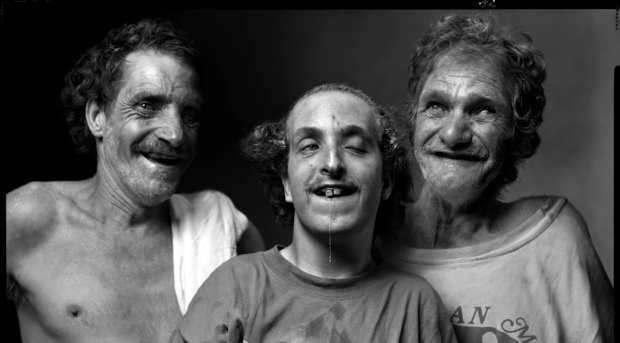
Measures
There are two measures of inbreeding:
Measure-1
The measure of inbreeding is described as the “coefficient of inbreeding”. It is the probability of both alleles having a common line of descent. It can also be put this way, “coefficient of inbreeding is a predictability measure of how the 2 alleles came from a common ancestor”. It is denoted by f(A) where A is the individual and inbred individuals don’t show significant deviation from the coefficient of inbreeding.
Measure-2
Another measure of describing the extent of inbreeding is the “ancestry coefficient”. It is used to explain the extent of relatedness between 2 individuals (A and B). It can also be put this way, “ancestry coefficient is the probability of 2 randomly selected alleles (random mating) from 2 individuals A and B to belong to the same ancestor”. It is denoted by f(A,B).
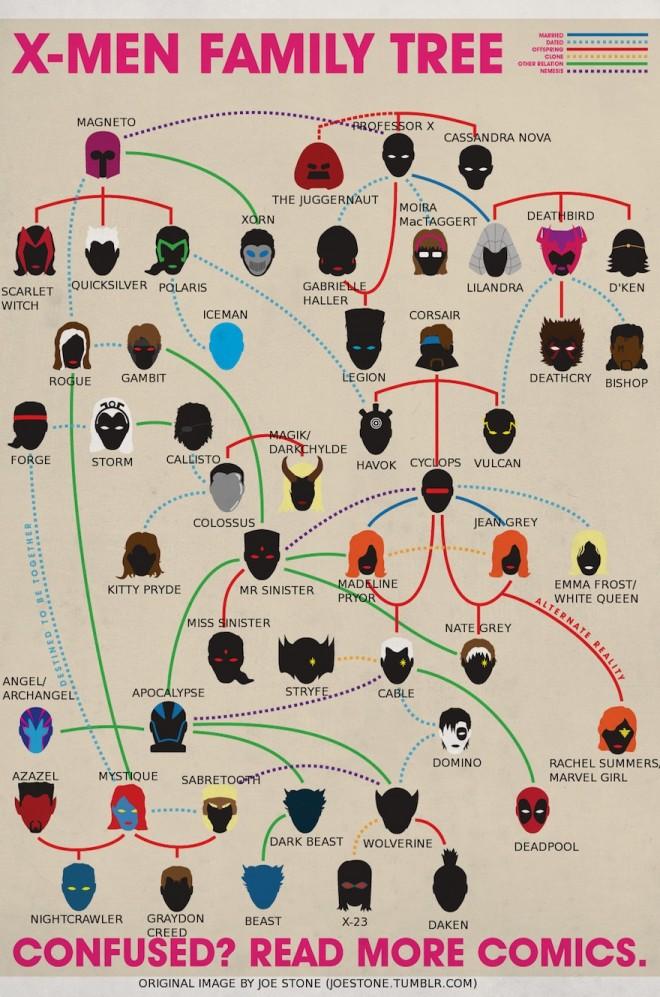
Animals
Inbreeding is quite a common phenomenon in animals. Let’s take a quick look at the same.
Wild animals
Examples of some wild animals where inbreeding is a frequent occurrence are wild banded mongoose, Cottony cushion scales (Icerya purchasi), Adactylidium (type of mites), Florida panthers, wolves, etc.
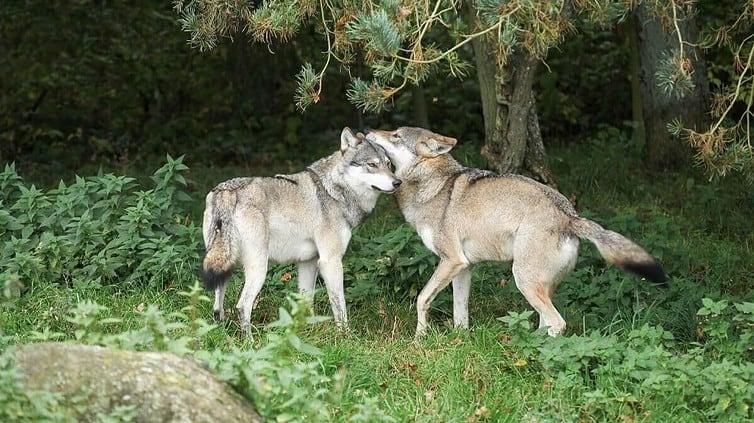
Domestic animals
Examples of some domestic animals where inbreeding is a frequent occurrence are cats (inbreed cats), dogs (inbred dogs like dalmatian inbreeding, pedigree dogs inbreeding), cattle, etc.
Domestic animals are selectively bred (inbreeding) and the process is called assertive breeding. Breeders running breeding programs for domestic animals have to pay due attention to the cases of recessive deleterious alleles being expressed in the homozygous state as it could lead to severe recessive disorders.
Methods adopted to prevent this are:
- Reproductive isolation
- Culling
- Sterilization
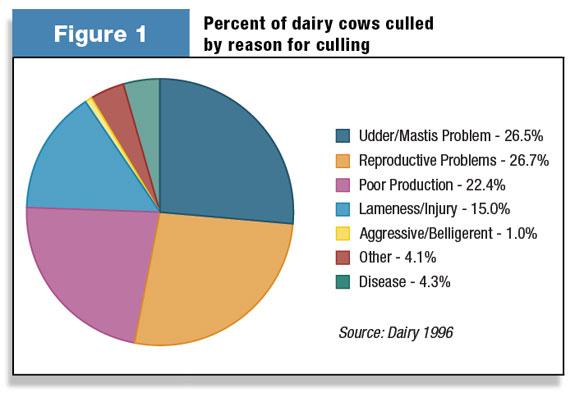
If one is interested to learn more about haphazard breeding in domestic animals and its negative consequences, we suggest reading/watching documentaries about:
- Holstein breed of cattle and the inbreeding mishap
- Dog inbreeding and its negative consequences (Pedigree Dogs Exposed- a BBC documentary)
- Dog inbreeding mishap (Pedigree Dogs Exposed: Three Years On- another BBC documentary) Here is the link.
Linebreeding
Linebreeding is a type of inbreeding. Some important pointers to linebreeding are:
- No clear difference from inbreeding.
- Act between individuals and descendants.
- Leads to a reduction in genetic diversity over time.
- Fewer chances of problems in 1st generation.
- Usually, problems associated with line breeding are due to a tiny gene pool.
- Commonly associated with inbreeding depression and the occurrence of genetic disorders.
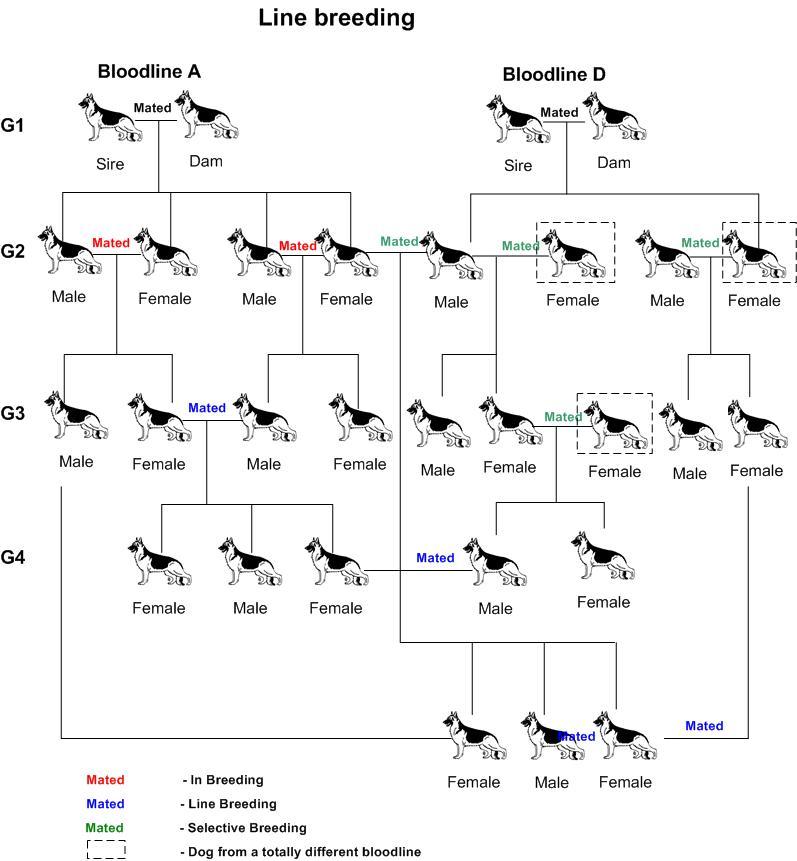
Outcrossing
Outcrossing is the opposite of inbreeding. It is the phenomenon of mating between two very distinct individuals (unrelated parents) for the production of progeny. Some important pointers for outcrossing are:
- Both mating individuals are distantly related to ancestors.
- The genetic variability is huge in the progenies.
Laboratory animals
Laboratory animals are used for various pharmacological and toxicology studies. For this motto, systematic inbreeding is often done. To maintain an inbred line of lab mice, hamsters, and rats, the phenomenon of inbreeding is highly essential. Therefore, biomedical research depends heavily on the concept of inbreeding.
Pros of inbreeding (or why lab animals are inbred):
- Guaranteed consistency and uniformity in lab animal models for scientific studies and experiments.
- Option to work on congenic and knock-out animal models.
- A large percent of homozygosity (nearly 98.7%) can be achieved by inbreeding for 20 generations (quite small)
- Facilitates studies related to genetic versus environmental effects.
Humans
Inbreeding in human beings is not a very good idea. It is often referred to as consanguineous marriages/ consanguineous mating. Many of us are already familiar with that term from our genetics lessons. Ashkenazi Jew inbreeding is one of the known groups with extreme inbreeding while some other groups show low inbreeding.
Effects
The fitness of the offspring can decrease or increase when inbreeding occurs. This is so because inbreeding leads to the expression of recessive alleles via the creation of a homozygous state. Deleterious alleles, when expressed in such a state lead to autosomal recessive genetic diseases and disorders.
Population size and inbreeding
Inbreeding becomes graver in small populations. The smaller the size of the population, the lesser the scope of genetic variability that already exists. Inbreeding further leads to the reduction of genetic variations. This limits the offspring’s fitness to the threshold limit and results in inbreeding birth defects. Inbreeding thus becomes particularly problematic in smaller populations than larger ones. (Read more about Arab populations and inbreeding in smaller populations [severe inbreeding in humans] in the work of Tadmouri, G. O et al.)

Prevalence
The prevalence of inbreeding is non-uniform across the globe and in different cultural groups. Some of the main factors that have played role in the abstention of inbreeding in human societies (for good) are:
- Cultural taboos
- Religious education and norms
- Parental education
- Awareness by the means of ancient Science
All these factors have somehow contributed to the prevention of consanguineous marriages and successfully saved the lives of millions or billions of children (by preventing lifelong congenital abnormalities that accompany such marriages)!
Inbreeding is still prevalent in 2 cases:
- Small cultural groups where the population size is small and geographical barrier prevents outcrossing
- Cultures that don’t have any problem with consanguinity
Royalty and nobility
In the olden days, ignorance towards inbreeding was very high. To make political and power dynamics or relationships, a trend of marrying between royalties and nobilities was very common. In many European royalties, inbred lines (lines with interlinked genetic relationships) can be studied.
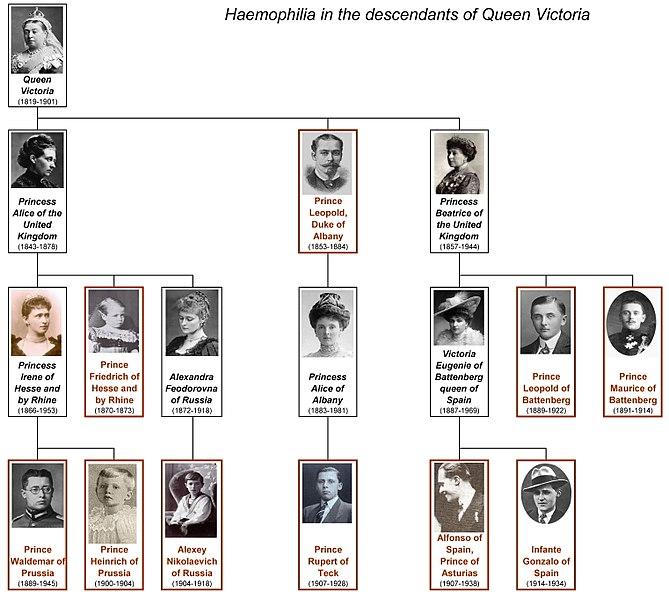
FAQS related to Inbreeding
- Are blue eyes a sign of inbreeding?
Eye color is a polygenic trait, i.e., it’s determined by more than one gene. To date, scientists have found >150 genes responsible for the manifestation of a person’s eye color. While different shades of brown and black are more common among most human beings, blue eye color is a recessive trait. And let’s bust the pseudoscience that blue eyes are a sign of inbreeding. They are not a sign of inbreeding. Read this article by Mackey, D.A. to learn more about blue eyes and the genetics involved. (Reference-11) There are similar myths like “does inbreeding cause blue skin?”
- What are the genetic effects of inbreeding in humans?
Some of the physiological and physical signs of inbreeding in humans are hearing and vision issues, neonatal diabetes, malformations, congenital diseases, reduced fecundity, etc.
- What effect does inbreeding have on a population?
It increases the proportions of homozygous individuals in a population but doesn’t directly alter allele frequencies. It also increases the expression of deleterious alleles in the population, thus reducing the fitness of individuals in the population.
- Do attached earlobes confirm inbreeding in a family line?
This is a myth. Attached or free earlobes are two different phenotypes determined by an individual’s genetics. It doesn’t necessarily indicate the biological relationship of inbreeding to the family line.
- Are dimples a birth defect?
Well, scientists are divided on this subject. Some studies have pointed out that dimples are birth defects and are determined by a dominant gene, while others strictly deny the relation of dimples to any underlying genetic cause.
- Is cystic fibrosis dominant or recessive?
Recessive. Inbreeding increases the chances of the progeny being born with cystic fibrosis condition.
- Is red hair dominant or recessive?
Recessive.
- Can DNA test find out inbred?
Yes
- In which subject do we study genetic drift and inbreeding?
Population biology
Take the Inbreeding – Biology Quiz!
References
- Kingston, H. M. (1989). ABC of clinical genetics. Genetics of common disorders. BMJ: British Medical Journal, 298(6678), 949.
- Gershman, S., Barnett, C., Pettinger, A. et al. Inbred decorated crickets exhibit higher measures of macroparasitic immunity than outbred individuals. Heredity 105, 282–289 (2010). https://doi.org/10.1038/hdy.2010.1
- Wright, S. (1922). Coefficients of inbreeding and relationship. The American Naturalist, 56(645), 330-338.
- Crnokrak, P., & Roff, D. A. (1999). Inbreeding depression in the wild. Heredity, 83(3), 260-270.
- Tadmouri, G. O., Nair, P., Obeid, T., Al Ali, M. T., Al Khaja, N., & Hamamy, H. A. (2009). Consanguinity and reproductive health among Arabs. Reproductive health, 6(1), 1-9.
- Victor A. McKusick (August 1965). “The Royal Hemophilia”. Scientific American. pp. 88–95.
- Jiménez, J. A., Hughes, K. A., Alaks, G., Graham, L., & Lacy, R. C. (1994). An experimental study of inbreeding depression in a natural habitat. Science, 266(5183), 271-273.
- Lynch, M. (1991). The genetic interpretation of inbreeding depression and outbreeding depression. Evolution, 45(3), 622-629.
- Shawky, R. M., El-Awady, M. Y., Elsayed, S. M., & Hamadan, G. E. (2011). Consanguineous matings among Egyptian population. Egyptian Journal of Medical Human Genetics, 12(2), 157-163.
- Gagne, R. B., Tinker, M. T., Gustafson, K. D., Ralls, K., Larson, S., Tarjan, L. M., … & Ernest, H. B. (2018). Measures of effective population size in sea otters reveal special considerations for wide‐ranging species. Evolutionary Applications, 11(10), 1779-1790.
- Mackey, D.A. What colour are your eyes? Teaching the genetics of eye colour & colour vision. Edridge Green Lecture RCOphth Annual Congress Glasgow May 2019. Eye 36, 704–715 (2022). https://doi.org/10.1038/s41433-021-01749-x
- “Incestuous Sisters: Mate Preference for Brothers over Unrelated Males in Drosophila melanogaster”. PLoS ONE. 7: e51293
©BiologyOnline.com. Content provided and moderated by Biology Online Editors.

